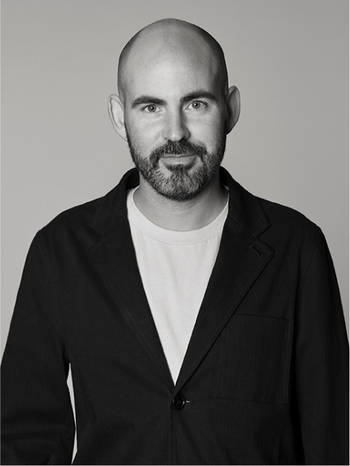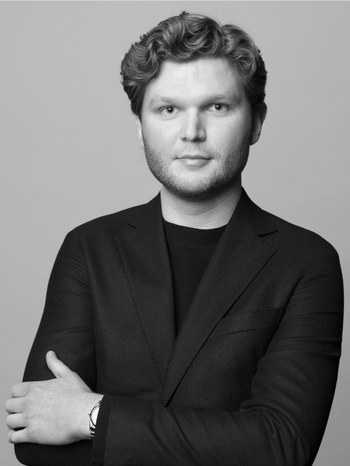Modern Art & Design presents Orrefors Lighting
Orrefors Lighting
For this autumn’s live auction Modern Art & Design, Bukowskis presents a curated selection of lighting from the Orrefors Glassworks, with designs ranging from 1920s classicism, via 1930s functionalism to the modernism of the following three decades.
The Orrefors Glassworks saw the light of day as early as 1898, but it was in the 1920s that it achieved world fame. The realization that only artists could renew the glass industry, the personalities and power struggles of the leading designers Simon Gate and Edward Hald, and a rapidly growing international industrialism were all important factors for this success. At the exhibitions in Gothenburg in 1923, Paris in 1925, New York and Chicago in 1927 and Stockholm in 1930, the glassworks from the deep woods of Småland stood out. Orrefors carefully followed the style shifts of the decades from Nordic classicism, through functionalism to modernism.
Already around 1919-20, Edward Hald designed some lamp shades with engraved decor. In the mid-1920s, a catalogue was released in a loose-leaf system with sketches by Gate and Hald, where chandeliers in Nordic classicist style were offered to "architects and other interested parties". The shades were cut and etched in different patterns and Gate had, in the spirit of the times, provided his fixtures with tassels and prisms. The lighting fixtures from Orrefors started to gain attention. "Saturnus" in yellow tinted frosted glass was launched in 1929, followed in the 1930s by a large range of ceiling lamps decorated with celestial patterns. Throughout his time as a glass designer, Edward Hald seems to have been particularly attached to the zodiac and other celestial motifs. Period-typical functionalist lamps consequently followed in the period after the Stockholm exhibition in 1930.

Around 1942, Fritz Kurz was hired as technical and to some extent artistic director of the lighting department. Production, in addition to cut and etched models, became increasingly "à la Venezia" with pompous chandeliers. Lighting designer Carl Fagerlund was employed at Orrefors in 1946 and the export market had become a major source of income. Orrefors lighting designed by Fagerlund was especially appreciated in the USA, and the largest supply of lighting fixtures ever issued by Orrefors was designed by Carl Fagerlund for the Kennedy Center in Washington, inaugurated in 1971. Over the years, most of the artists at Orrefors have designed a number of fixtures, where in addition to the above, Sven Palmqvist and Ingeborg Lundin should be highlighted.
Rarely, if ever, have Orrefors lighting in a scale of this selection been presented to the market, and Bukowskis aim is here to show the artistic diversity and richness of ideas that characterized the lighting department of Orrefors during its golden years.

Selected highlights
Edward Hald
Hald's monumental chandelier with model number "HD 55" in amber-tinted glass was designed around 1928. It is one of the department's foremost, and undoubtedly most imposing, examples of the Nordic classicism we today call Swedish Grace, which permeated the 1920s.
To the catalogue

Simon Gate & Erik Tidstrand
For Tändstickspalatset (The Matchstick Palace) in Stockholm, most of the fixtures were made in a collaboration between Nordiska Kompaniet and Orrefors. The building was commissioned by the "Match King" Ivar Kreuger (1880–1932) as the headquarters of the Swedish match company Svenska Tändsticks AB. It was designed by architect Ivar Tengbom (1878-1968) and built from 1926 to 1928. The present ceiling lamp, executed ca 1928, hung in the corridors of the Tändstickspalatset.
To the catalogue

Vicke Lindstrand
Glass artist Vicke Lindstrand came to Orrefors in 1928 and was associated with the glassworks for just over a decade. Over the years, he designed several fixtures, including the functionalistically emphasized "Arsenal", with a globe in amber-tinted glass and discs in clear glass with ring decoration. In several aspects a kind of further development of Hald's celestial motifs and "Saturnus" models developed around 1930.
To the catalogue

Carl Fagerlund
Kalmar-born Carl Fagerlund was employed as a lighting architect at ASEA in Stockholm in 1944 and took up the corresponding position at Orrefors glassworks in 1946. Fagerlund was responsible, in addition to several ceiling and table lamp models, for many public interiors both in Sweden and abroad. In the present auction, he is represented with ten models, including "RD 1323" in blue underlay glass.
To the catalogue

Ingeborg Lundin
Ingeborg Lundin was employed at the glassworks in 1947, and came to work with both utility and art glass. She was awarded the Lunning Prize in 1954 and a gold medal at the Milan Triennale in 1957, which gave her international notoriety. Fixtures by Lundin are rare, especially model "D 1907" from the 1960s in brass and molded glass.
To the catalogue

The objects will be sold at Modern Art & Design
Viewing: November 14–18, Bukowskis, Berzelii Park 1, Stockholm
Open: weekdays 11 am – 6 pm, weekends 11 am – 4 pm
Live auction: November 19–20, Arsenalsgatan 2, Stockholm
Read more about Modern Art & Design
Browse the catalogue
Requests & condition reports Contact specialist

Stockholm
Camilla Behrer
Head of Design/ Specialist Modern & Contemporary Decorative Art & Design
+46 (0)708 92 19 77

Stockholm
Eva Seeman
Chief Specialist Modern and Contemporary Decorative art and design
+46 (0)708 92 19 69

Stockholm
Jonatan Jahn
Head Specialist Contemporary and Modern Design
+46 (0)703 92 88 60

Stockholm
Karl Green
Specialist Modern and Contemporary Decorative Art & Design
+46 (0)700 07 94 25



























